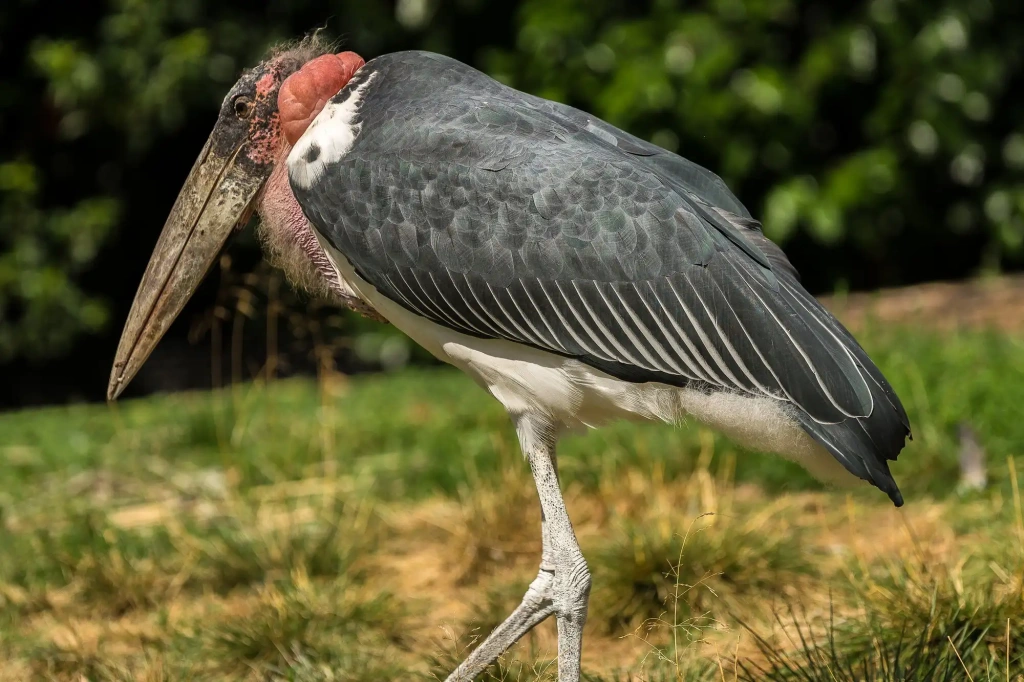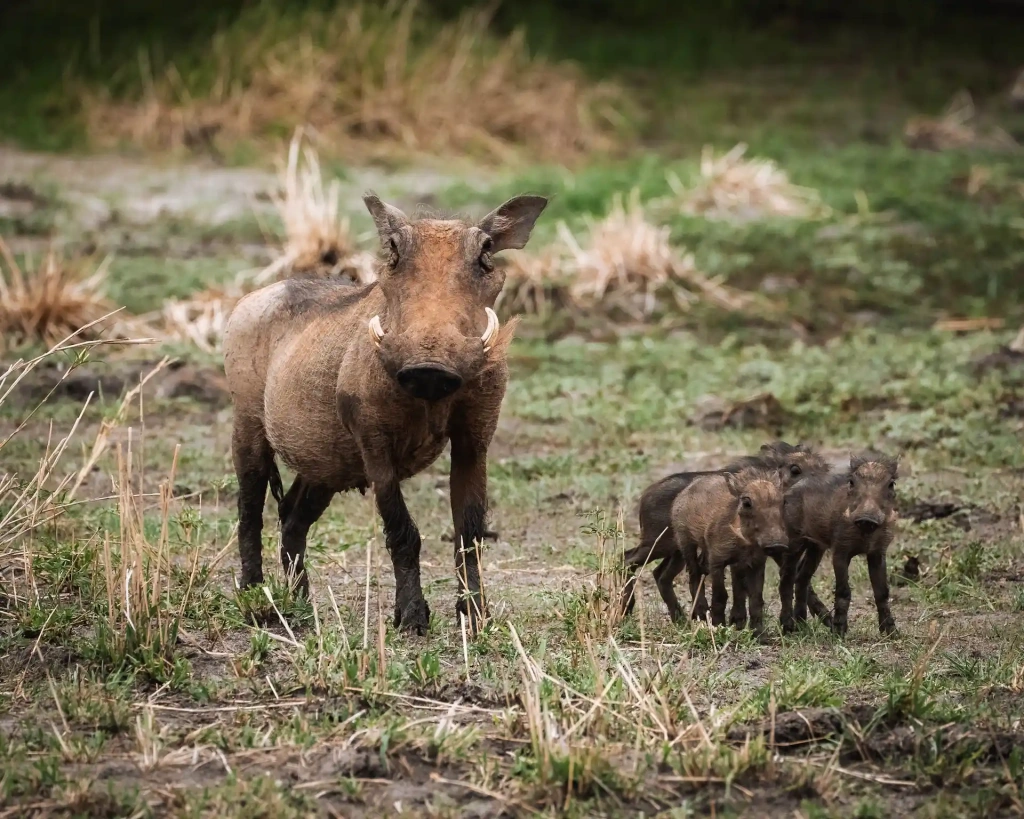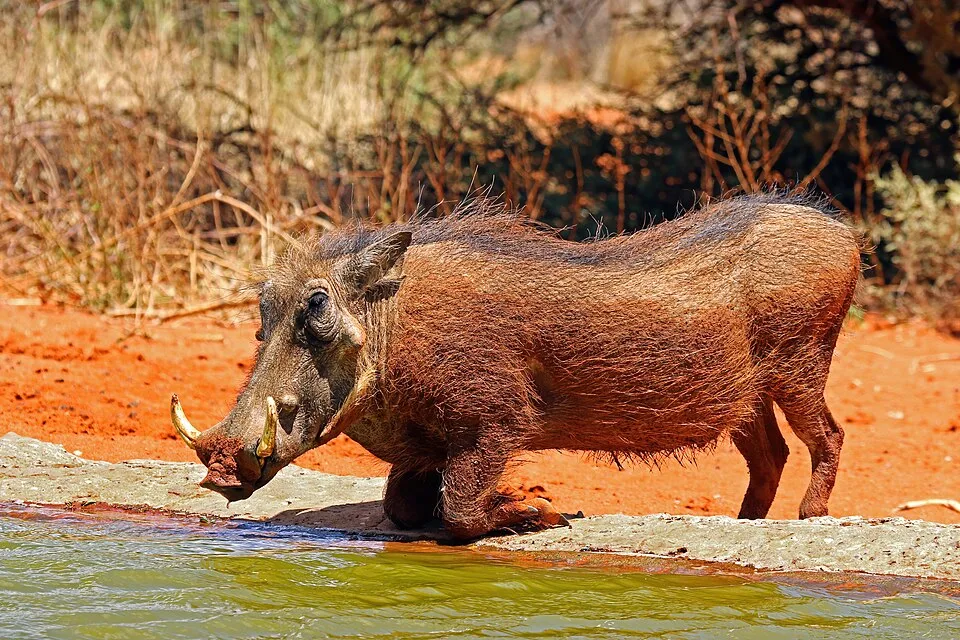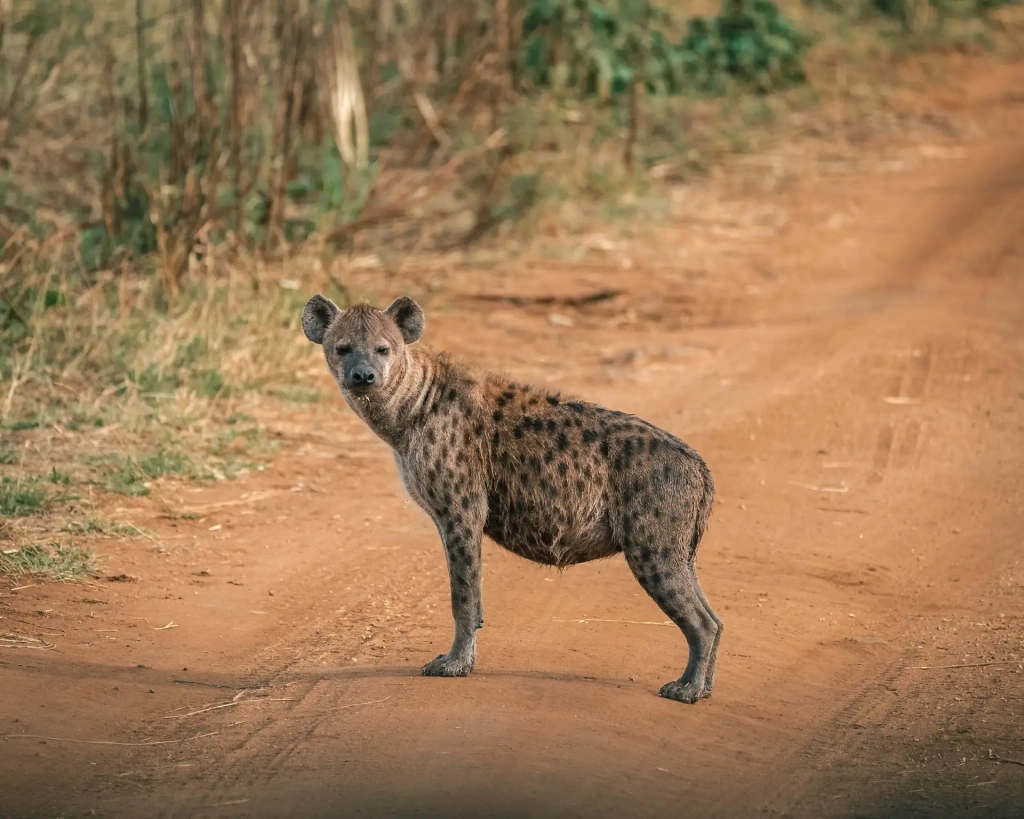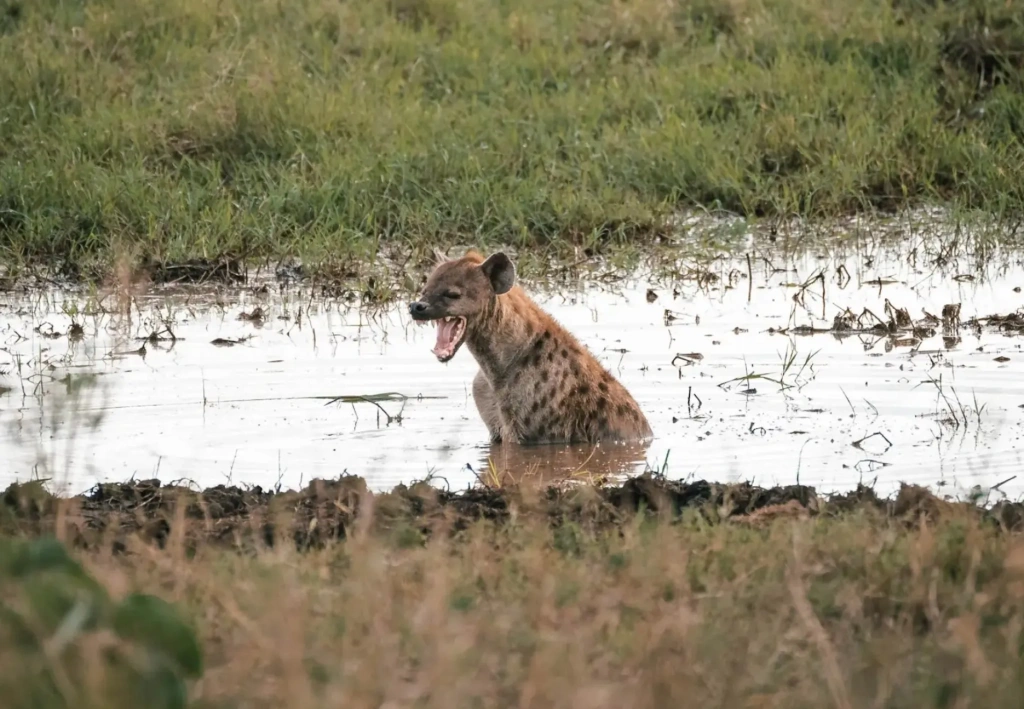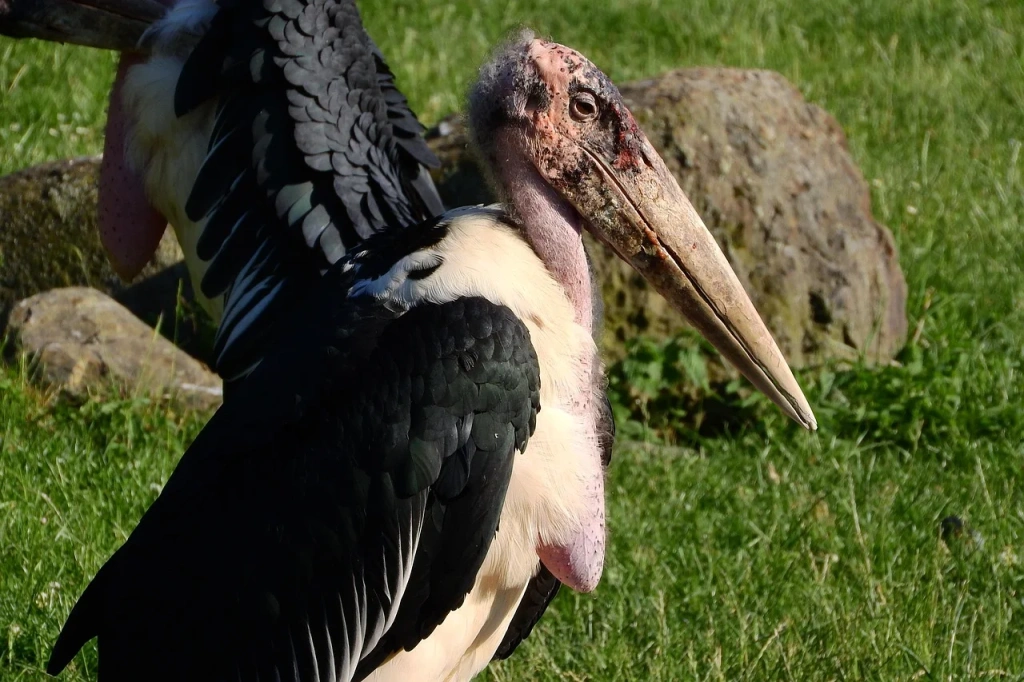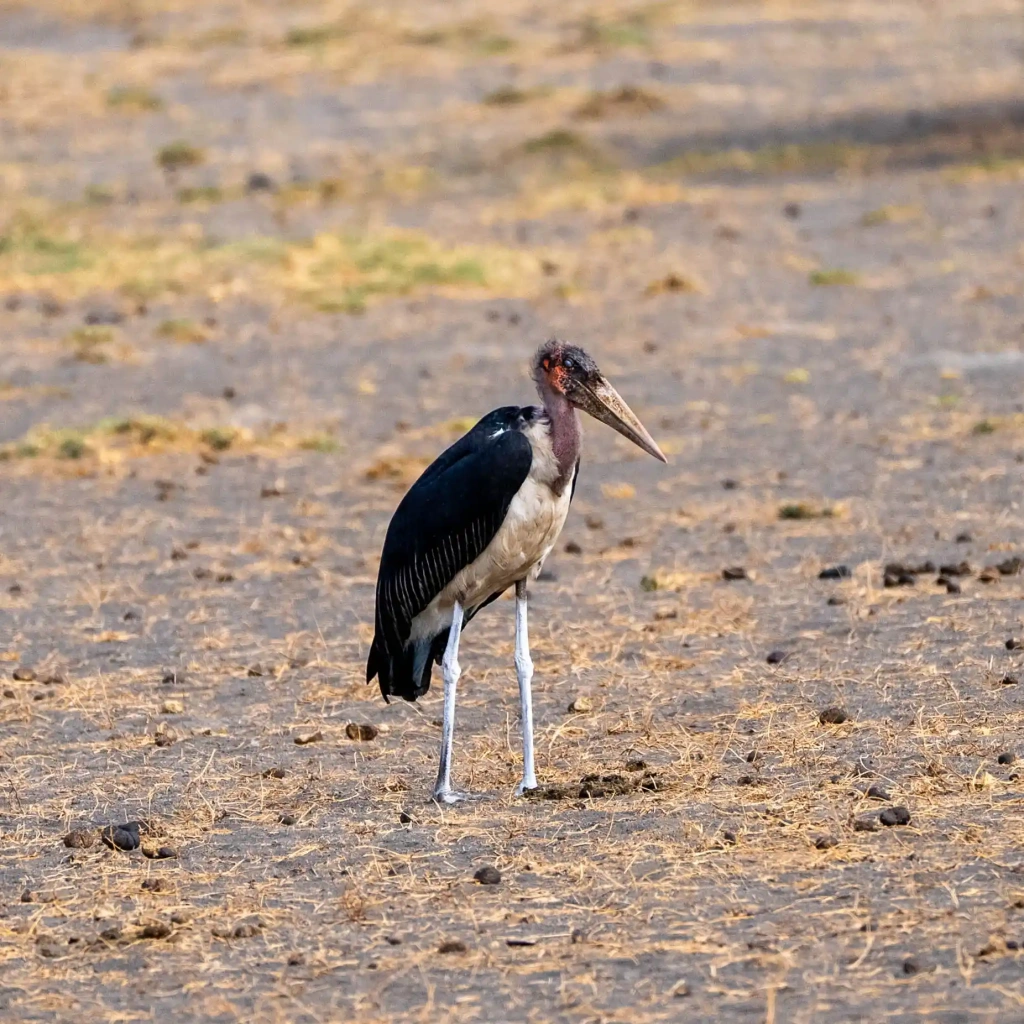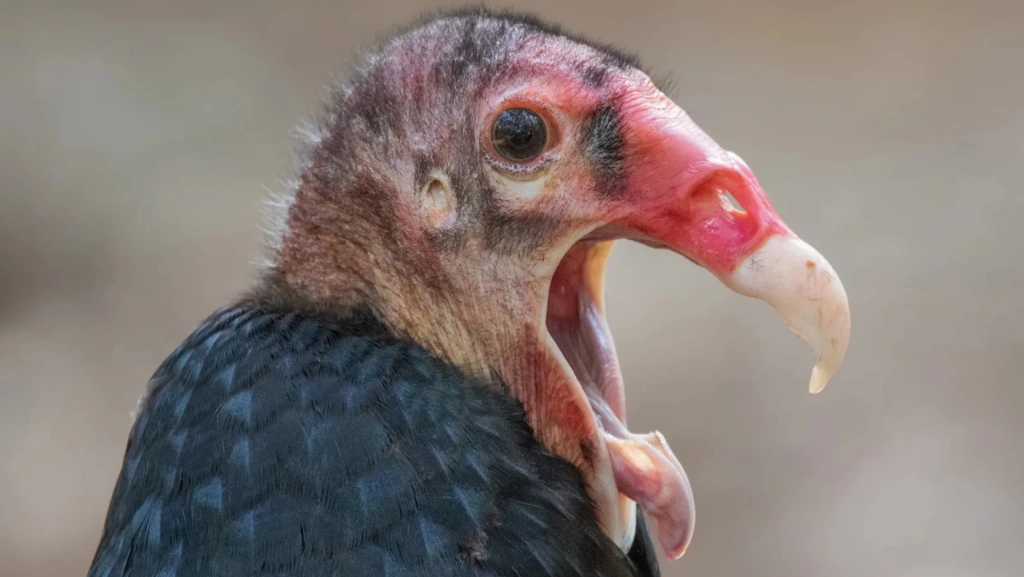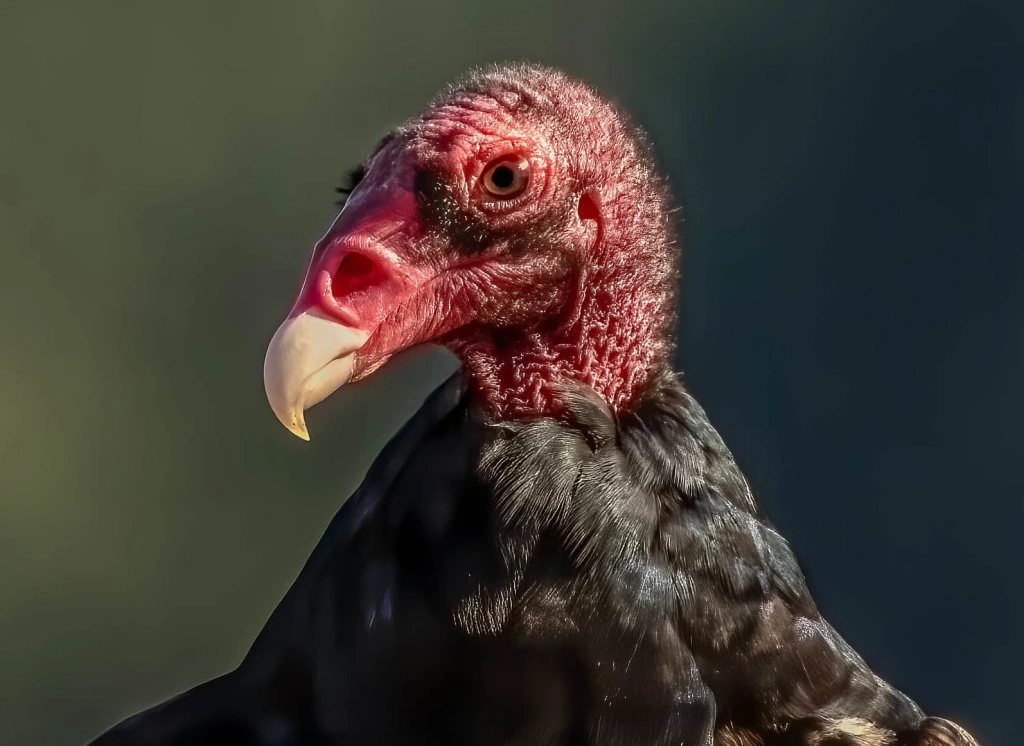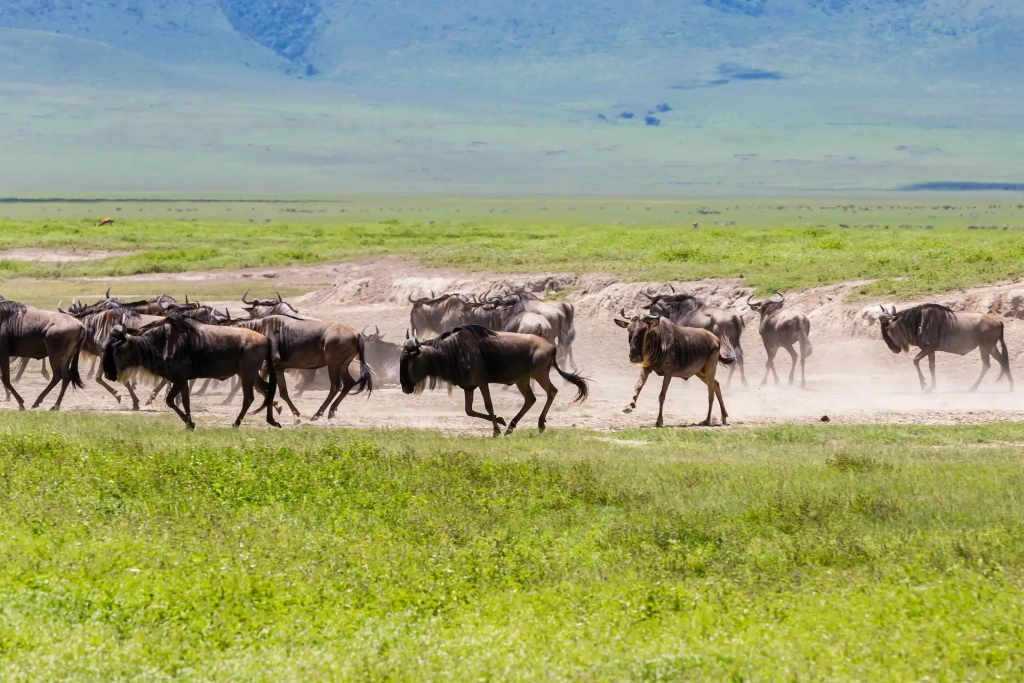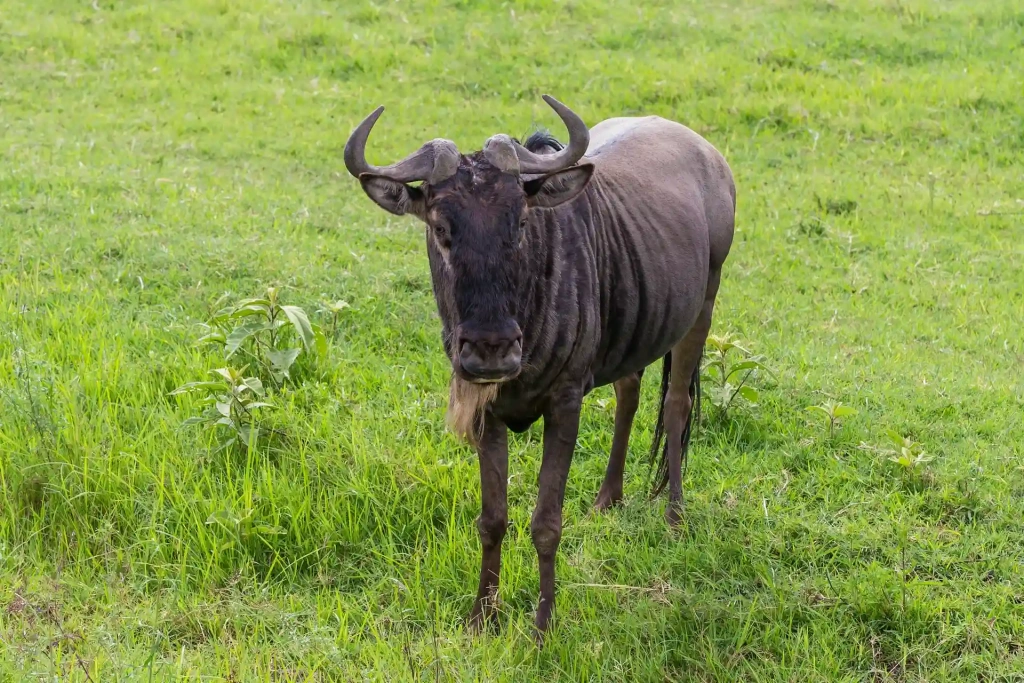If you’ve ever looked into going on safari in Africa, you’ve probably heard of the Big Five: elephant, lion, rhino, leopard, and buffalo. Every year, thousands of adventurers and wildlife lovers head to Tanzania hoping to spot these iconic animals in the wild.
But beyond the Big Five, there’s another group that doesn’t get nearly as much attention — a lesser-known lineup known as the Ugly Five.
In this article, we’re shining a light on some of the savanna’s most (subjectively) unattractive creatures you can find in Tanzania’s national parks. Meet the Ugly African Five.
Warthog
The Ugly African Five starts with a member of the pig family that rose to fame thanks to The Lion King — the warthog, famously portrayed by the lovable Pumbaa.
Warthogs get their name from the distinctive wart-like growths on their faces. Their bodies are covered in sparse bristles, making them appear almost hairless from a distance. The most noticeable patches of hair are the ridge along their backs and the tufts on their faces and tails.
Male warthogs are generally larger than females and have more pronounced “warts” on their faces. They also sport prominent tusks, which can grow up to 65 cm (about 25.5 in) long. Females have tusks too, but they’re noticeably smaller.
Although warthogs can eat small rodents, birds, and invertebrates, their diet is mainly plant-based. One of their more unique behaviors is how they feed: they often kneel on their front legs, bending their joints as if resting on their elbows while grazing, drinking, or digging.
Warthogs are commonly found in savannas, open grasslands, and lightly wooded areas throughout sub-Saharan Africa. In Tanzania, you can spot them in national parks such as Serengeti, Tarangire, and Arusha, as well as in the Ngorongoro Conservation Area and other protected regions. Warthogs are quite skittish and surprisingly fast, running at speeds of up to 50 km/h (about 31 mph). This agility helps them escape predators like leopards, lions, hyenas, and other large carnivores.
Before you head out on a safari to see wildlife in Tanzania, be sure to check out our safari packing checklist. We’ve put together a comprehensive guide to everything you might need for your trip and wildlife viewing in the savanna. It’s available to download and save as a handy PDF.

Spotted hyena
Though they might look like dogs, hyenas belong to the family of carnivorous mammals called Feliformia, the cat-like suborder. Their ancestors first appeared about 22 million years ago during the Miocene epoch, roaming the jungles of Eurasia. Interestingly, many early cat species back then were mainly tree dwellers.
Africa is home to four species of hyenas, with the spotted hyena, often called the “laughing” hyena, being the most common. Its name comes from the spotted coat, while the “laughing” nickname comes from the distinctive, loud calls it makes, which sound like laughter and can carry up to 8 miles (about 13 km) away.
Spotted hyenas are very intelligent creatures. They live in large clans governed by a strict matriarchal structure, where females are dominant. In fact, female hyenas are generally larger, stronger, and more assertive than males. Clan leadership is typically passed from mother to daughter, reinforcing the tight-knit female hierarchy.
Females stay with their birth clan for life, cooperating in hunting and raising their young without male assistance. Males, on the other hand, leave their natal clan when they reach adolescence. Once they find a new group, they start at the very bottom of the social ladder, below all resident males. Interestingly, the most dominant male in the group still ranks below every female, often submitting even to juvenile females.
If you want to learn more about the unique dynamics of hyena clans, watch the video below.
Among the other amazing features of hyenas is their unique reproductive anatomy. Female spotted hyenas possess external genitalia that closely resemble those of males. What looks like a penis is an elongated clitoris, often referred to as a pseudopenis, that also serves as the birth canal. The clitoral tube is relatively narrow, and childbirth often leads to its tearing, causing the death of both the mother and the offspring.
In northwestern Tanzania, particularly among the Sukuma people, parts of the hyena are still used in traditional medicine practices. Remedies made from hyena meat, skin, and even feces are believed to help treat a variety of illnesses, including tuberculosis.
Spotted hyenas also appear in local folklore. One Tanzanian legend claims that they serve witches, who ride them like horses. In the Mtwara region, some believe that a child born on a night when a hyena’s laugh is heard may grow up to become a thief or criminal.
And while hyenas are often thought of as scavengers, that reputation doesn’t tell the whole story. In reality, 66 to 90 percent of their diet comes from animals they hunt themselves.
Marabou Stork
The Marabou Stork, a large wading bird, is often found near populated areas. It has earned a reputation as a regular at landfills, where it scavenges for carrion and small rodents — some of its favorite meals. It’s also sometimes nicknamed the “undertaker bird” due to its striking appearance: dark wings and back drape over its body like a cloak, with long, thin legs extending underneath.
This impressive bird can stand up to 1.5 meters (about 4.9 feet) tall and weigh between 9 and 10 kilograms (20–22 pounds).
The Marabou Stork was first formally described in 1831 by the French naturalist René Lesson. The name “Marabou” is thought to come from the Arabic word “murābit”, which roughly translates to “quiet” or “hermit.”
Marabou Storks often feed on carrion. Their bald head and long, bare necks help them stay clean while feeding deep inside carcasses. But their diet isn’t limited to scavenging: marabous have also been known to prey on other birds, including pigeons, pelican chicks, cormorants, and even flamingos.
Lappet-faced Vulture
Like the previous member of Africa’s Ugly Five, the Lappet-faced Vulture is a well-known scavenger across Africa. Its powerful, hooked beak easily rips through skin and muscle, making quick work of carcasses. Thanks to its highly acidic stomach, this vulture can safely digest decaying flesh, even if it’s contaminated with harmful substances like botulinum toxin, cholera, or anthrax. By consuming carrion along with dangerous bacteria and viruses, the Lappet-faced Vulture plays a vital role in maintaining the health of the ecosystem, earning its title as the savanna’s chief cleanup crew.
There are 23 species of vultures alive today, and one of the most common in Africa is the Brown Vulture. Like the Marabou Stork, it has a bare head, which helps keep the bird relatively clean while feeding. This feature also plays a role in regulating body temperature. When the vulture feels cold, it tucks its head into its shoulders and covers itself with its wings. In hot weather, it stretches out its neck to help cool down.
Additionally, the Brown Vulture can lower its body temperature by urinating on its legs. This process, known as urohidrosis, not only cools the bird but also helps neutralize bacteria and parasites that may linger from carcasses.
Lappet-faced Vultures rarely hunt healthy animals, often targeting wounded or sick prey. To locate such targets, these birds use special signals to communicate with each other. From high up in the sky, it’s hard to spot a still carcass far below. But once at least one vulture finds it, it begins circling above the spot, signaling to the others that food is nearby.
The Altezza Travel team offers an exciting experience called the Vulture Safari. It is a must-see, especially if you have a passion for exotic birds: Tanzania is home to over 1,150 species. Most importantly, this tour gives you a rare chance to see one of Africa’s most iconic feathered residents up close.
Wildebeest
Closing out the Ugly African Five is the most famous member of the antelope family, the wildebeest. This species plays a central role in one of nature’s most incredible and thrilling events: the Great Migration, the largest migration of land animals on Earth. Year after year, for hundreds of thousands of years, millions of wildebeests, alongside zebras and gazelles, follow the same route in search of food, forming a continuous loop.
Starting from Kenya’s Maasai Mara, the herds move into Tanzania’s Serengeti National Park, then reach the Ngorongoro Conservation Area. From there, they travel clockwise along the western side, heading back north toward the Kenyan border. Throughout this journey, they must constantly evade predators that track their movements.
The most intense and dramatic moment comes during the crossing of the Mara River, right at the border between the two countries. The river is home to hungry, bloodthirsty crocodiles, making this crossing a deadly feast for these predators.
Another name for the wildebeest, “gnu”, is often translated from Afrikaans as “wild beast,” “wild ox,” or “wild cattle.” Other sources trace the name back to the , where it comes from the word “t’gnu.”
In conclusion
They may not appear in glossy tourist brochures or star in wildlife documentaries, but each of these animals plays a vital role in the ecosystem. Africa’s Ugly Five animals remind us that in nature, true value isn’t about outward beauty — it’s about the impact every species makes in maintaining the balance of life. And maybe, it’s in their “unattractiveness” that the genuine, unfiltered beauty of the wild is found.
All content on Altezza Travel is created with expert insights and thorough research, in line with our Editorial Policy.
Want to know more about Tanzania adventures?
Get in touch with our team! We've explored all the top destinations across Tanzania. Our Kilimanjaro-based adventure consultants are ready to share tips and help you plan your unforgettable journey.















